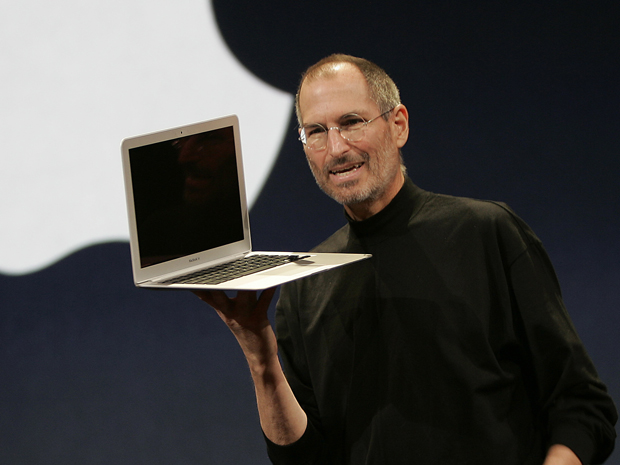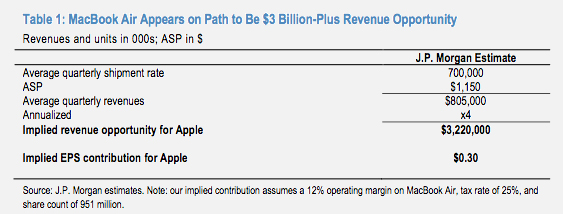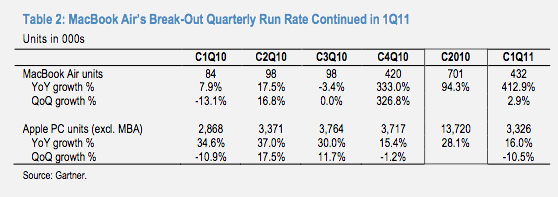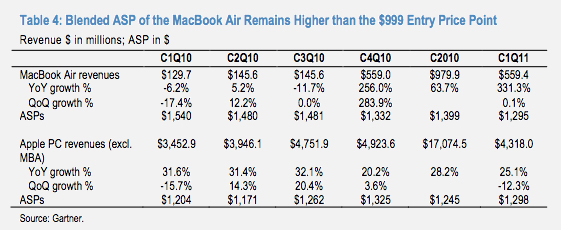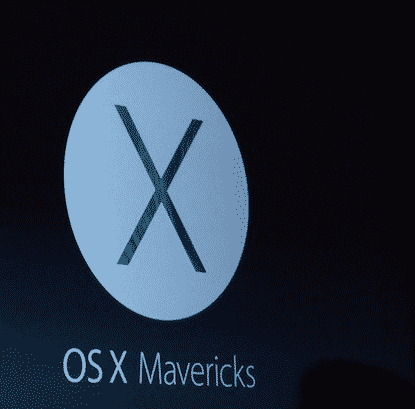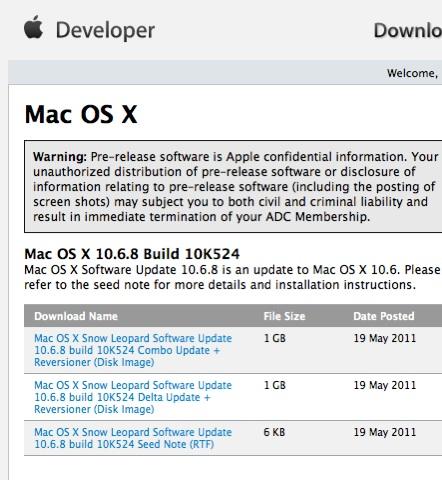J.P. Morgan hardware analyst Mark Moskowitz has increased his assessment of the MacBook Air’s revenue opportunity from $2.2 billion to $3 billion-plus and Apple is expected to release a Sandy Bridge MacBook Air within the next month or so and also would wait until Mac OS X Lion dropped before releasing any new hardware. Other vendors will chase the size and weight and functionality of the Air, because that class of laptop offers many of the benefits of tablet computing, such as being lighter, thinner, having quick boot times and Apple’s iCloud offering could help turn Apple‘s ultra-thin MacBook Air into a $3 billion-a-year business, even as sales of fatter notebooks and desktop computers stagnate………..
J.P. Morgan analyst Mark Moskowitz Thursday sharply increased his revenue estimate for the MacBook Air, telling investors he expects $3 billion annually from the laptop, up from the $2.2 billion projected in April. MacBook Air shipments were up 412 percent in the first quarter of 2011 compared to a 10.5 percent sequential drop for other Mac devices and a 10.1 percent decrease for PCs and the analyst described such a spike as a break-out for the MacBook Air. According to Gartner’s estimates, Apple shipped 432,000 MacBook Air units in the first quarter of 2011, up 412.9 percent year over year and 2.9 percent sequentially. In particular, Moskowitz sees the sequential growth as a positive sign of sustainable demand for the thin-and-light notebook. The MacBook Air also significantly outpaced total Mac units (excluding the MacBook Air), which were down 10.5 percent sequentially in the first quarter of this year and the broader PC market, which was down 10.1 percent.
Moskowitz sees Apple’s iCloud and similar cloud-based services as driving a reduction in internal storage requirements, which should quicken adoption to the MacBook Air. J.P. Morgan estimates that currently just 3-4 percent of notebook PCS utilize Solid-State Drives instead of Hard Disk Drives. The analyst believes the MacBook Air acts as a a quasi-tablet for productivity, given its combination of tablet-like features such as ultra-portability, thinness, and instant-on with an integrated keyboard and a full computing applications suite. International demand for the MacBook Air serves as evidence of plenty of room for growth, according to the analyst. By breaking out sales into regions, Moskowitz shows that the MacBook Air has a fairly balanced distribution and therefore maintains a wide appeal. Moskowitz does note that the MacBook Air’s higher Average Selling Price may be a hurdle to sustained growth, but he predicts a $100 price drop for the MacBook Air in the next product refresh, due to component cost declines and more integrated features. The current ASP of the MacBook Air is estimated to be $1,295, almost $300 more than the entry price.
[ttjad keyword=”mac”]

